Picture this: you’re sipping your morning coffee when a flash of emerald catches your eye outside your window. A tiny jewel-like bird hovers at your feeder, its wings beating so fast they’re nearly invisible. You’ve just witnessed one of nature’s most incredible marvels – a hummingbird. But did you know that North America is home to dozens of these aerial acrobats, each with its own unique personality and stunning features?
Ruby-throated Hummingbird
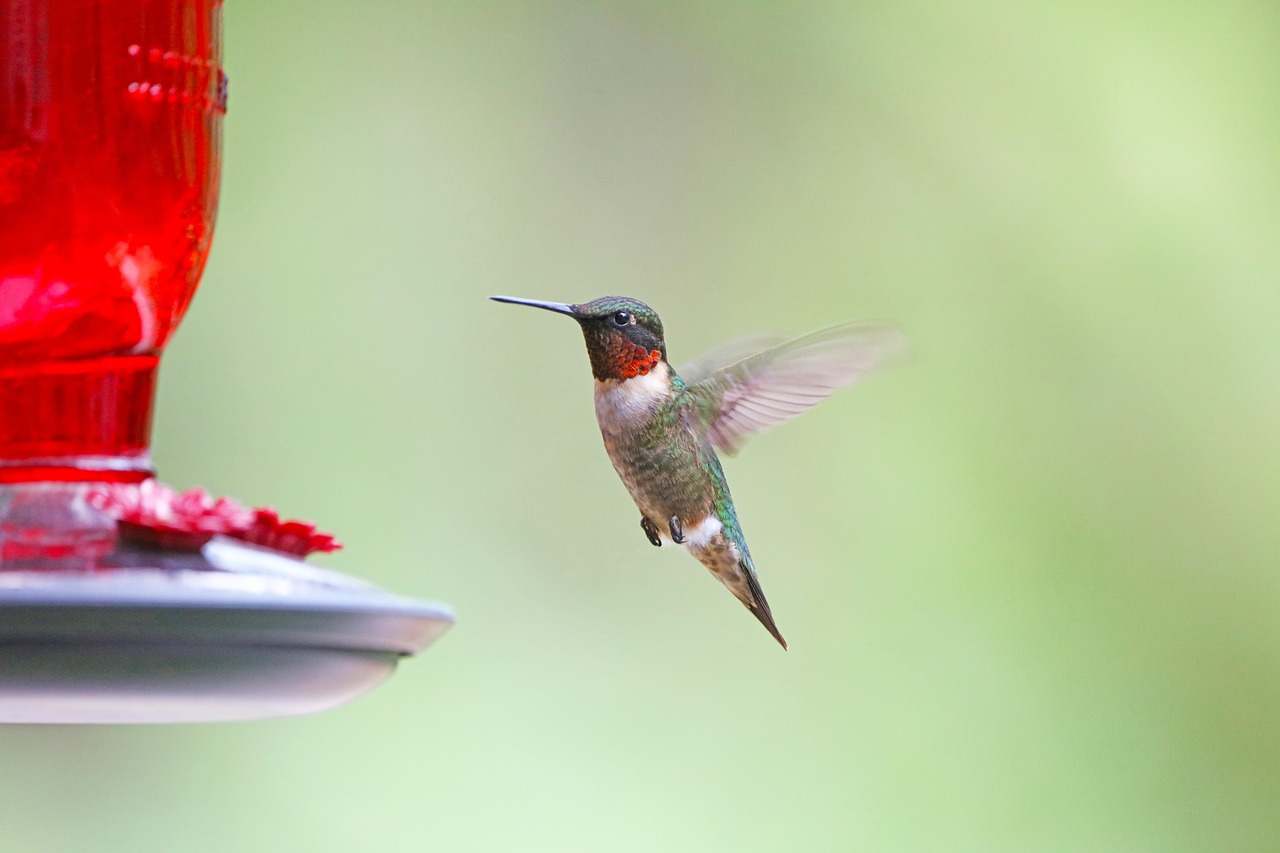
The Ruby-throated Hummingbird stands as the most popular and commonest of hummingbirds, frequently seen at bird feeders or speedily zipping from flower to flower. During the summer months of breeding season these birds can be found across the Eastern half of the United States and the southern portion of Canada, making this the only species of hummingbird found in the Eastern United States.
The Ruby-Throated Hummingbird’s gorget (the iridescent throat patch of male hummingbirds) is strawberry-red. While both male and female have a grey-white underside, only the males have a very distinct ruby red patch on their throat, with the shade of red and size of the patch varying from bird to bird. These remarkable birds can actually double their body weight before migration, going from just three grams to six grams to fuel their incredible journey across the Gulf of Mexico.
Anna’s Hummingbird

Only in recent decades has the Anna’s hummingbird become the most abundant type of hummingbird of the Pacific states, and it is the only type of hummingbird that remains year-round in the Northwest. This colorful recent arrival has greatly expanded its breeding range, which was once limited to the mountains of southern and central California, and is so new to the Northwest that it has not had time to evolve a migration pattern southward for winter, so it simply stays put, adapting to Northwest winters.
The male Anna’s hummer is one of the singing species, proudly belting out his screechy courtship song at any time of year, and can beam like a colorful flashlight when the bird turns its head to the right angle to catch the light. Unlike many other species, Anna’s hummingbirds have successfully colonized urban areas, making them a delightful sight in city gardens and suburban yards throughout the year.
Black-chinned Hummingbird
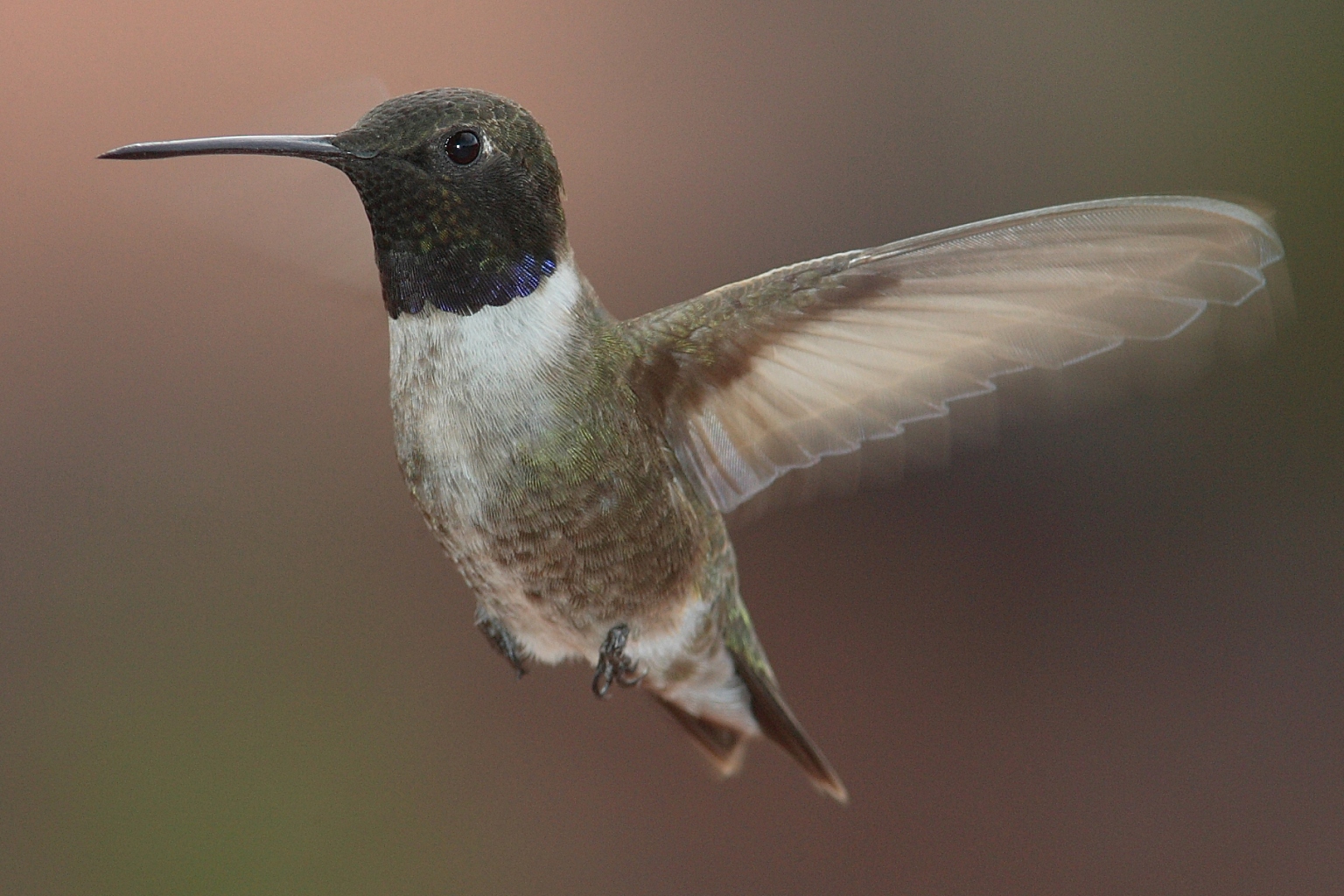
Black-chinned Hummingbirds are among the most adaptable of all North American hummingbirds, found in deserts, mountain forests, urban parks, and natural areas. Noteworthy as a generalist, the Black-chinned hummingbird appears in a wide variety of habitats, including lush river bottoms, urban settings and desert canyons, with males displaying a velvety black gorget beneath which is an iridescent purple band that can also look black in poor light.
At rest, the wingtips are relatively broad and curved, unlike any other North American hummingbird, and they are a rare to locally common resident east of the Cascades. These adaptable birds have learned to thrive in human-modified environments, making them wonderful garden visitors for those willing to provide nectar sources and water features in their outdoor spaces.
Rufous Hummingbird
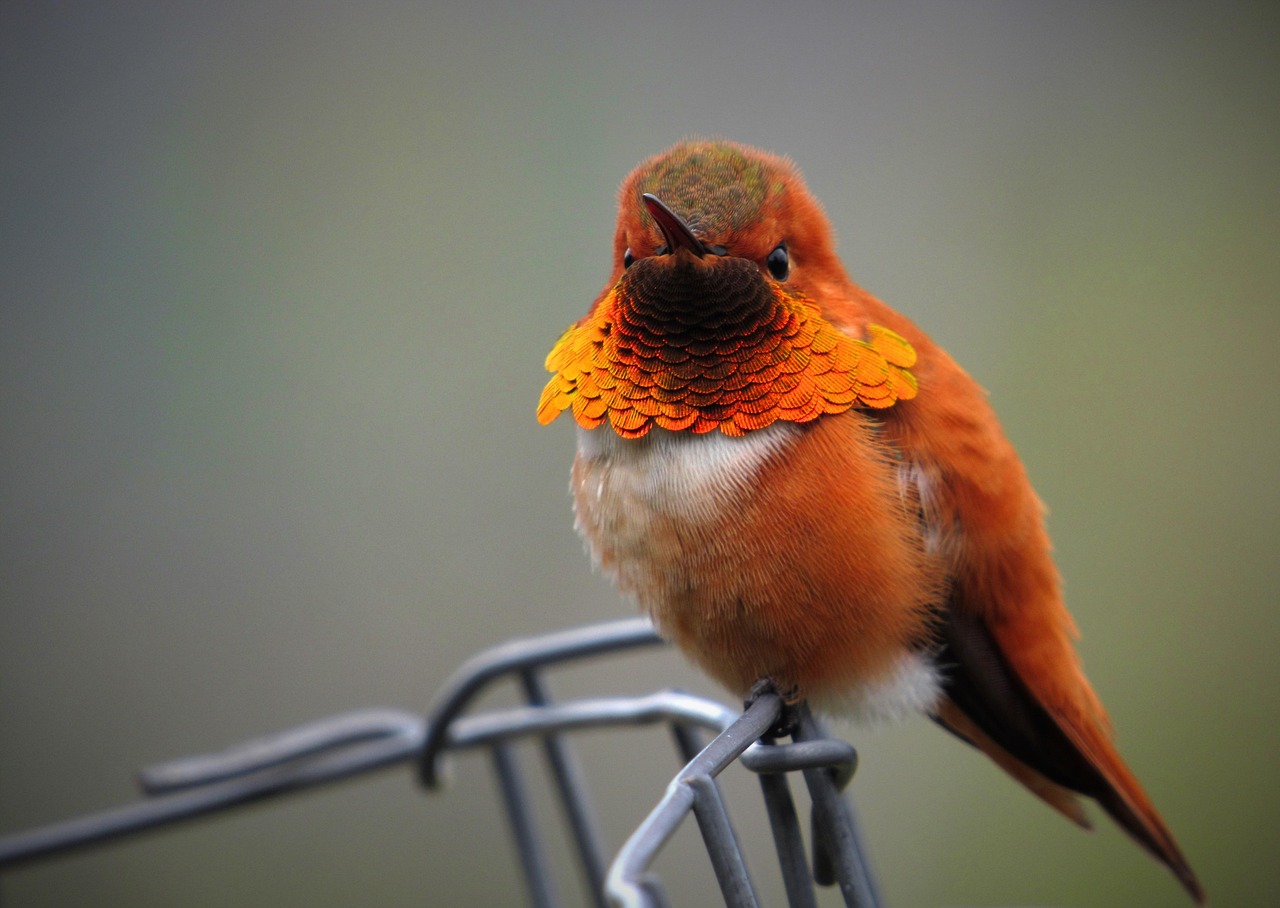
The Rufous hummingbird is the most common and widespread of Oregon hummingbirds, and this rusty-red and fearless nectar feeder is a popular yard bird, inspiring even the most modest of nature lovers to set up a feeder. During summer breeding season this particular species resides mainly in the Pacific Northwest into the Southwestern strip of Canada in open or shrubby areas of forest openings, yards, and parks, and when in their wintering grounds in Mexico, these hummingbirds are found between 7,500 to 10,000 feet elevation.
These fiery little birds are incredibly territorial and will chase away much larger birds from their favorite feeding spots. Allen’s hummingbirds are rust orange and green all over, with adult males having a rust colored tail, eye patch and belly with a deep red-orange throat, while immature males and females have similar coloring with only small spots of iridescent bronze on their throats. Their aggressive nature makes them fascinating to watch, especially during peak feeding times in the early morning and late afternoon.
Allen’s Hummingbird
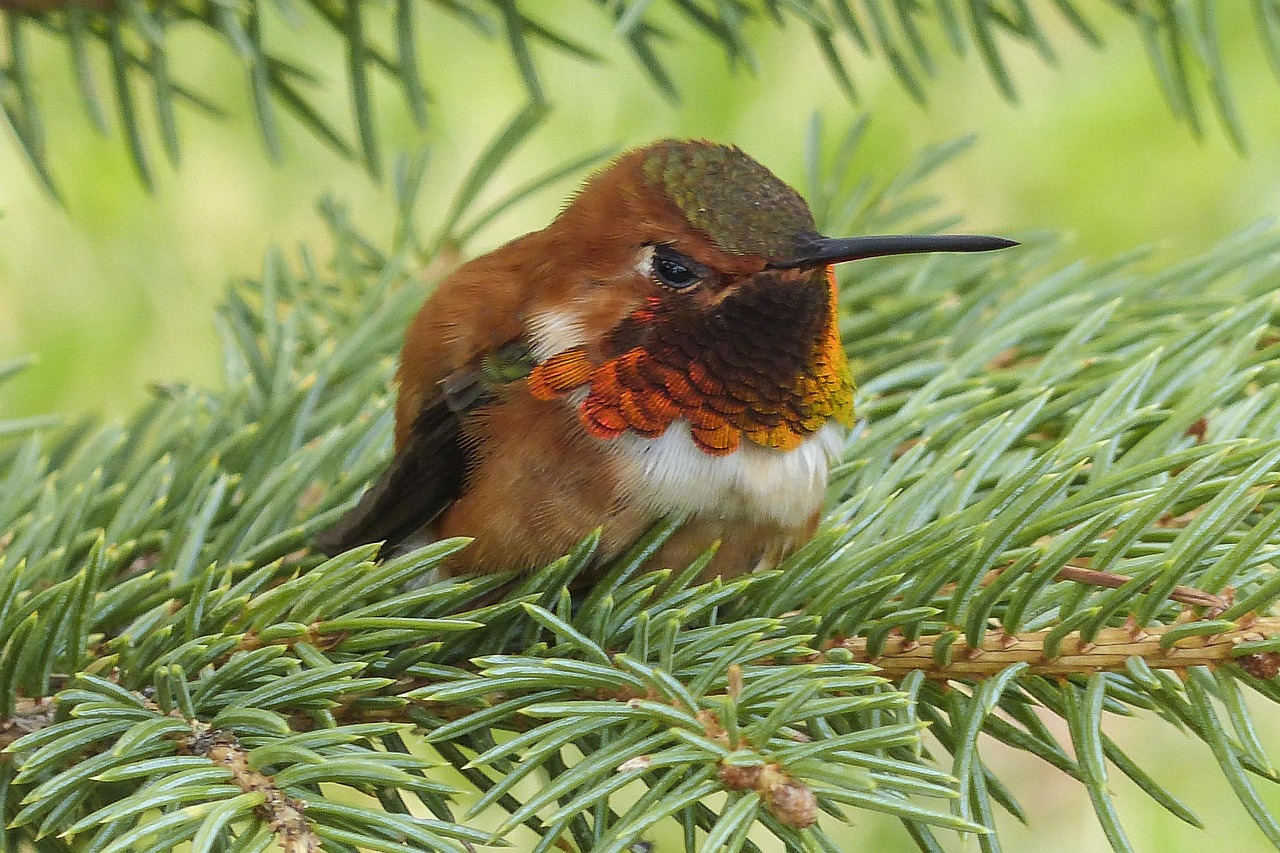
The Allen’s hummingbird would have made a fine choice for the official state bird of California because, other than a tiny length of coastline in bordering southwestern Oregon, the Golden State comprises the entire breeding range of this energetic, tiny hummingbird, with the two subspecies being essentially identical. Allen’s Hummingbirds are lookalike cousins to the Rufous Hummingbird, with an affinity for the fragrant coastal scrub and chaparral of California and Oregon, and males fly elaborate courtship displays, though as with most hummingbird species, the males don’t help raise the young.
The Allen hummingbirds are much greener on their backs and heads, have more reddish-orange on their flanks and have narrow outer tail feathers. These coastal specialists have adapted perfectly to California’s Mediterranean climate, making them year-round residents in many areas where they’ve established breeding populations. Their preference for native flowering plants makes them excellent indicators of healthy coastal ecosystems.
Costa’s Hummingbird

Costa’s Hummingbirds zip among saguaro and ocotillo in the parched landscape of the Sonoran and Mojave deserts, with males flashing a brilliant royal purple throat patch that juts off the sides of their neck like little wings. These desert specialists have evolved remarkable adaptations to survive in some of North America’s most challenging environments, where temperatures can soar above one hundred degrees during the day.
Unlike their mountain-dwelling cousins, Costa’s hummingbirds time their breeding season to coincide with the desert’s brief flowering periods, usually in late winter and early spring. Their ability to enter torpor during cold desert nights helps them conserve precious energy, dropping their body temperature and slowing their metabolism to near-hibernation levels until the warming sun revives them each morning.
Calliope Hummingbird

The Calliope Hummingbird is the smallest bird in the United States, weighing about one-third as much as the smallest North American warblers and about the same as a ping pong ball, making this tiny hummingbird the smallest long-distance migrant in the world. Magenta rays burst from the throats of the male Calliope Hummingbird as it dances and hovers, performing U-shaped display dives for females, and this tiny hummingbird breeds in meadows and open forests high in chilly Northwestern mountains, traveling more than 5,000 miles each year to pine-oak forests in Mexico and back again.
Despite their tiny size, these territorial birds may chase birds as big as Red-tailed Hawks during the breeding season, and while hovering, these birds’ metabolic rates increase to more than 16 times resting level. It’s absolutely mind-blowing to think that something weighing less than a nickel can intimidate a hawk and complete such an epic migration journey twice each year. They prefer densely vegetated mountainous areas as their habitat, including areas of coniferous forests, mixed forests where coniferous forests are interspersed with deciduous trees such as poplar or alder, and alpine meadows.
Broad-tailed Hummingbird

Broad-tailed Hummingbirds are some of the noisiest of all hummingbirds thanks to a loud, metallic trill males produce with their wings, and they can be found in high mountain meadows of western North America. A jewel of high mountain meadows, male Broad-tailed Hummingbirds fill the summer air with loud, metallic trills as they fly, breeding at elevations up to 10,500 feet, where nighttime temperatures regularly plunge below freezing.
To make it through a cold night, they slow their heart rate and drop their body temperature, entering a state of torpor, and as soon as the sun comes up, displaying males show off their rose-magenta throats while performing spectacular dives. In the U.S., the Broad-tailed Hummingbird favors pinyon-juniper, pine-oak, open woodlands, montane scrub, and meadows at elevations ranging from 5,000 to 10,500 feet. Their wing trills serve as an acoustic signature, allowing birders to identify them even when they can’t see the birds clearly.
Blue-throated Mountain-gem
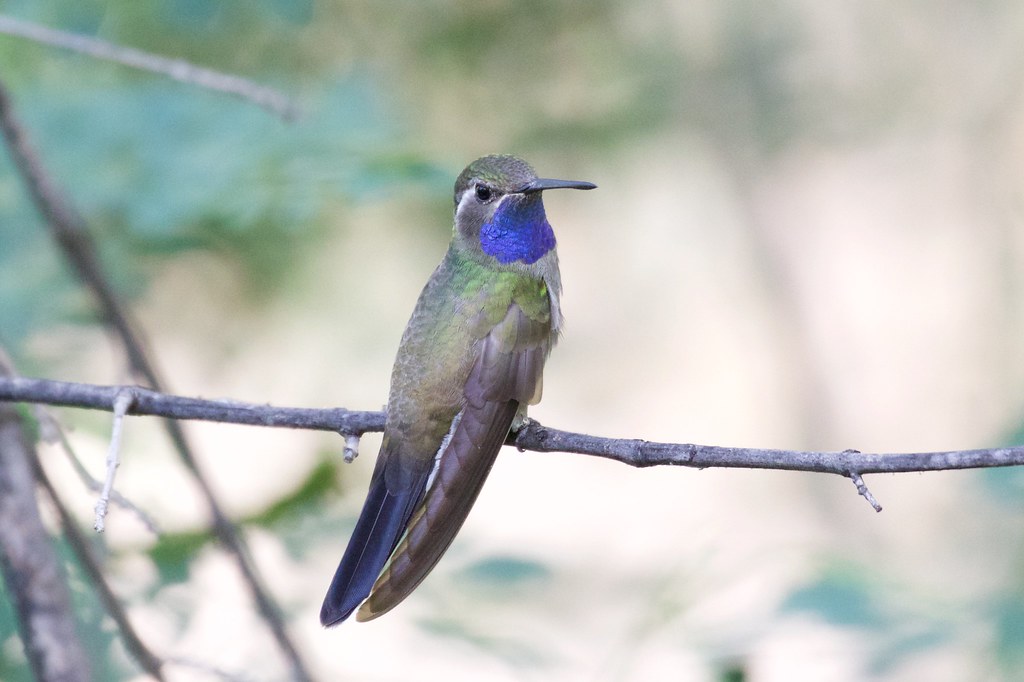
Largest of the hummingbird species that nest in the United States, the Blue-throated Mountain-gem is an assertive presence at feeders and flower patches, with males having a brilliant sapphire-colored gorget that glitters in good light and both sexes having double white stripes on the face and gray underparts. This Mexican species barely reaches the U.S. in southeastern Arizona and southwestern Texas, where it visits streamside flowerbanks and gardens, and unusual among hummingbirds, both female and male have complex songs, sometimes given in a duet during courtship.
Where it occurs, it is usually conspicuous: bold and aggressive, it dominates other hummingbirds, chasing them away from its favored flowers or sugar-water feeders, and the blue on the male’s throat is not easily seen, but the flashy white tail corners are hard to miss as the bird flies swiftly past or hovers in the shadows. Partners in Flight estimates a global breeding population of 2 million birds, with fewer than 2,000 of those in the United States. Their dueting behavior is truly unique among North American hummingbirds, creating an enchanting soundtrack in their mountain canyon homes.
Buff-bellied Hummingbird
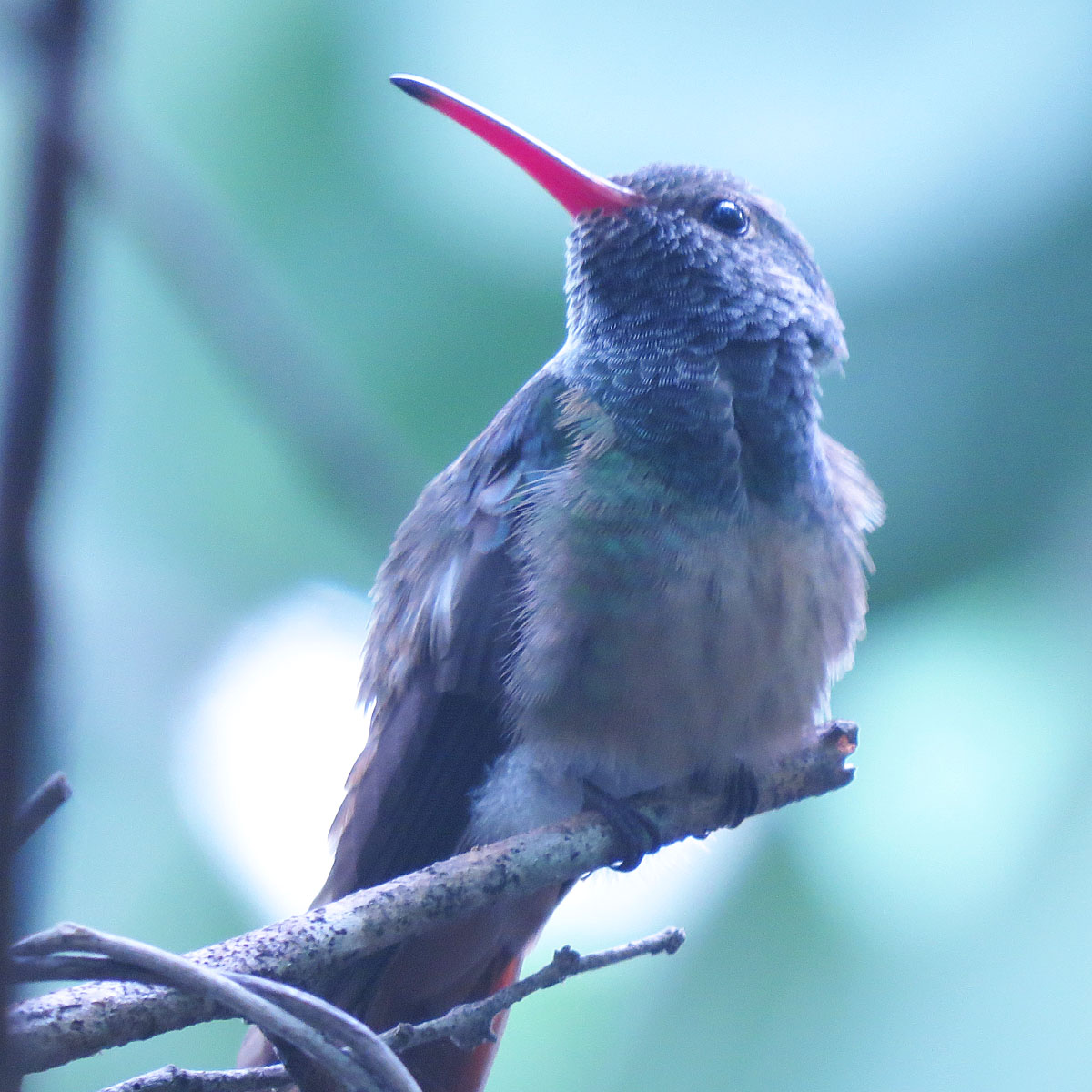
The Buff-bellied Hummingbird has bright green head, breast, and upper back with a buffy belly and bright red bill with a dusky tip. This hummingbird is mostly sedentary, and after the breeding season, some individuals move to the southeastern states in the U.S. between October through February. They occur along the Gulf Coast of Mexico, barely reaching into South Texas and sometimes stretching northward in winter along the U.S. Gulf Coast.
The Buff-bellied Hummingbird is a habitat generalist regularly found in forest edges, parks, gardens, and scrubby woodlands at elevations below 1,200 m. Unlike many hummingbird species that migrate vast distances, these birds have a more relaxed approach to seasonal movement, making short-distance relocations based on food availability rather than following strict migratory routes. Their bright red bills make them easy to identify when they visit garden feeders.
Broad-billed Hummingbird
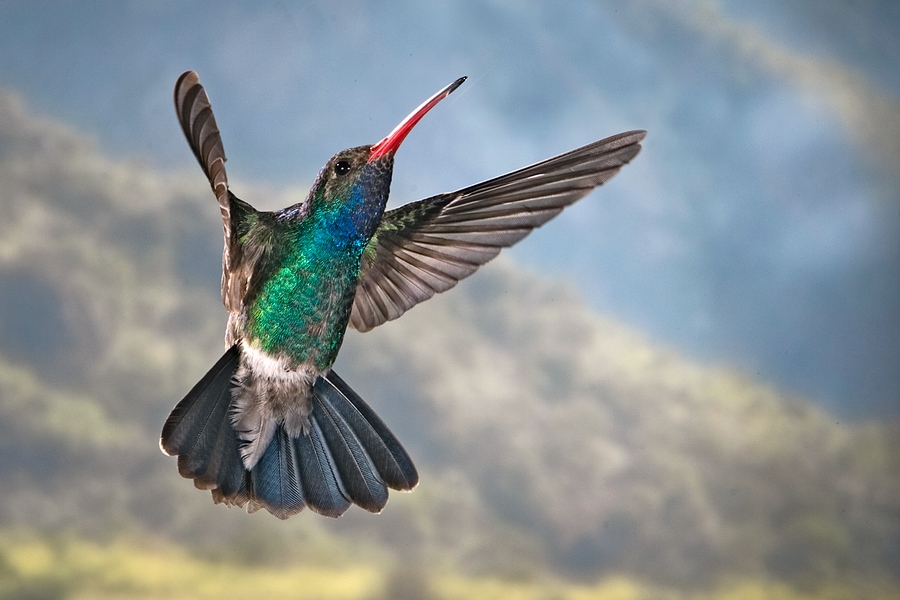
The Broad-billed Hummingbird brings a touch of tropical elegance to southwestern gardens with its stunning metallic coloration. Males display an iridescent emerald green throat and breast that can appear almost electric blue in certain lighting conditions. During the summer months in Colorado, the Broad-billed Hummingbird, scientifically known as Cynanthus latirostris, showcases its vibrant colors and distinctive features in semi-open habitats, and this species, known for its iridescent green back and turquoise crown, occasionally graces Colorado with its presence, adding a splash of color to the landscape.
Their relatively broad, slightly curved bills are perfectly adapted for accessing nectar from a variety of tubular flowers. These birds prefer areas with reliable water sources, making them excellent candidates for gardens with fountains, drippers, or shallow water features. Their Mexican origins mean they’re most comfortable in warmer climates, rarely venturing far north of the desert Southwest during breeding season.
Rivoli’s Hummingbird
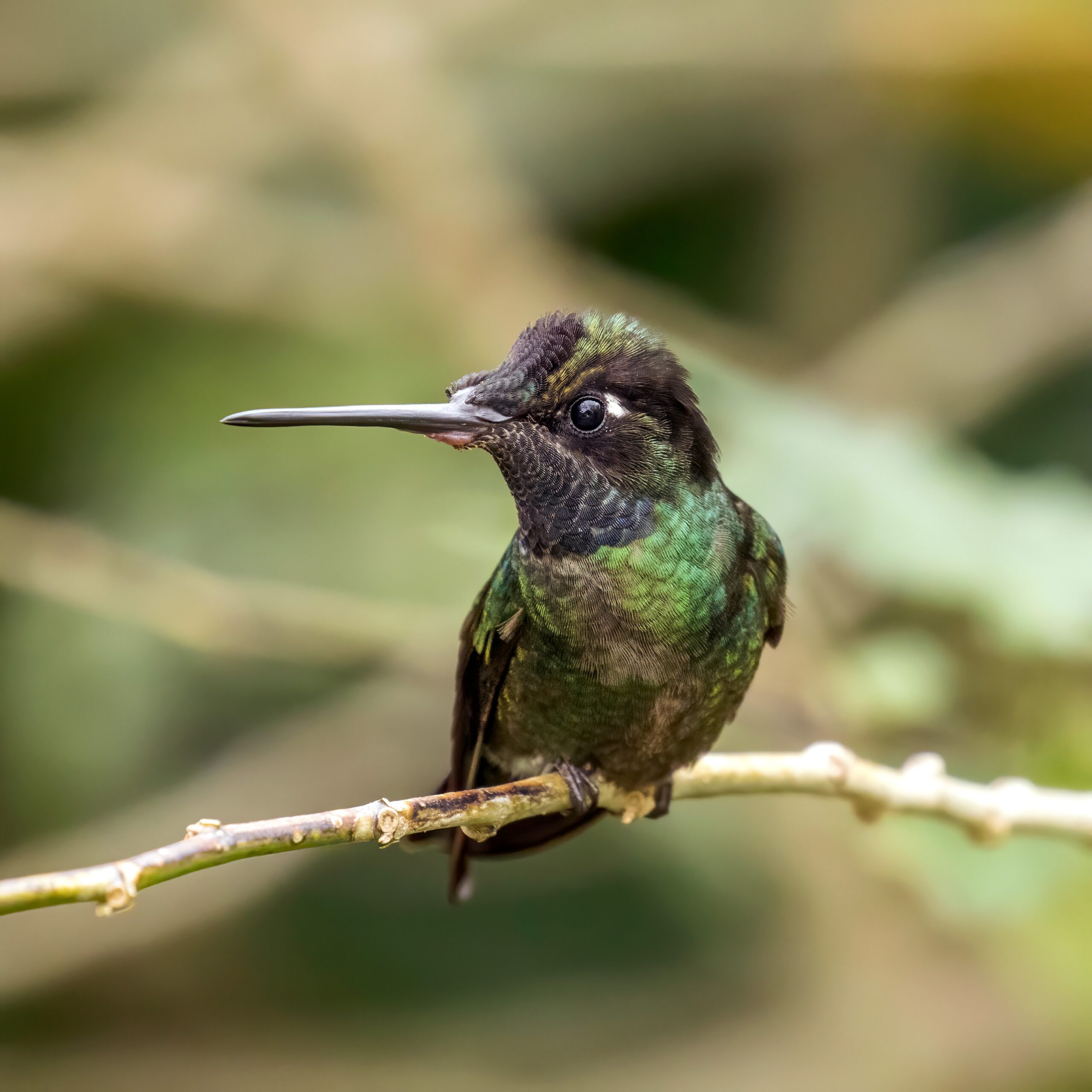
The former common name for this species, magnificent hummingbird, seemed perfectly appropriate for a large, striking hummingbird that reaches the northernmost extent of its range in the American Southwest, but in 2017, the American Ornithological Society split the magnificent hummingbird into the talamanca hummingbird of Costa Rica and western Panama, and the Rivoli’s hummingbird, which ranges from northern Nicaragua to the southwesternmost United States.
Both sexes are fairly and long, robust with an all-black bill, the male has a black breast and emerald-green gorget that separates it from all other U.S. hummers, and also look for a brilliant purplish crown. The Rivoli’s Hummingbird favors the interior of pine-oak forests, humid montane or cloud forest, and forest edges at elevations ranging from 1,500 to at least 2,740 m. These impressive birds are true mountain specialists, requiring the cooler temperatures and specific flowering plants found at high elevations.
Violet-crowned Hummingbird
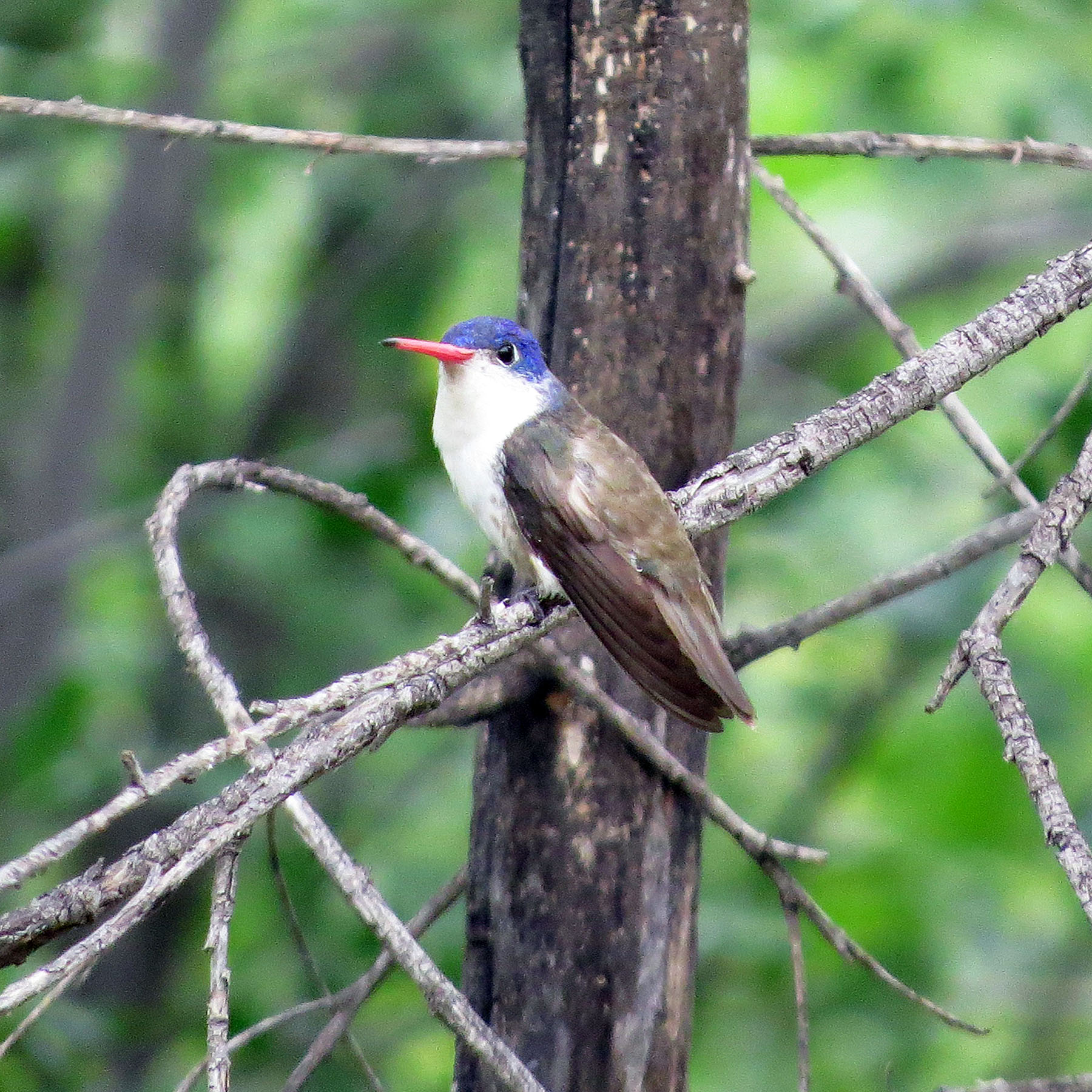
Unlike the other types of hummingbirds that breed in the United States, male and female violet-crowned hummingbirds are identical, and there is no way to differentiate between them in the field. They are also easy to separate from all other hummers in North America because of their bright white underparts and black-tipped red bill, and the violet-crowned hummer is primarily a Mexican species.
Its breeding range extends to southeastern Arizona and adjacent New Mexico, and the prevalence of feeders maintained by humans in well-known hummer locations within this region have increasingly encouraged this species to overwinter, moreover, in the 20th century, the violet-crowned hummer expanded its range northward into Arizona and New Mexico. Their pristine white underparts make them unmistakable among North American species, creating a stunning contrast with their iridescent violet crowns that shimmer like jewels in the desert sunlight.
White-eared Hummingbird
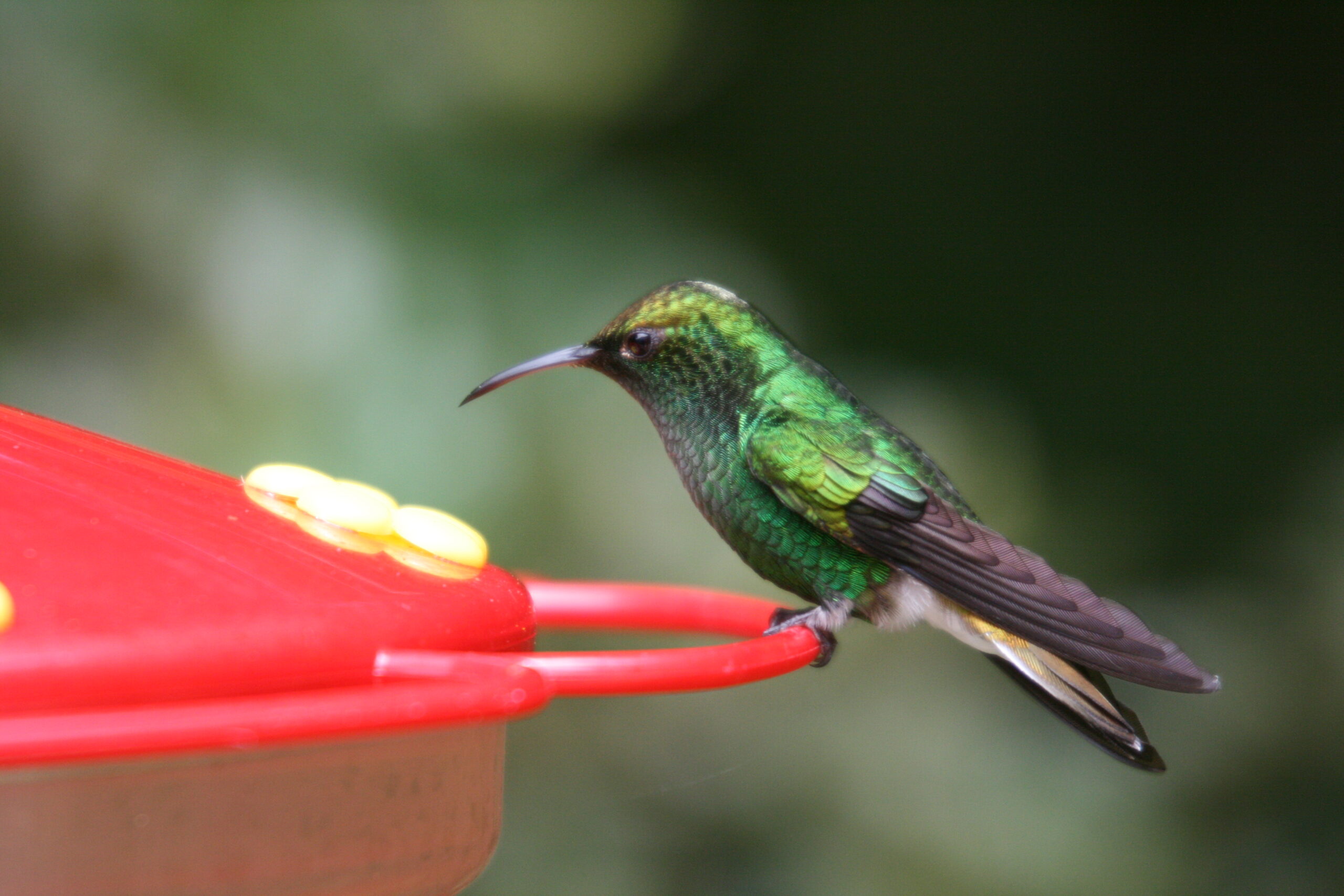
The white-eared hummingbird is a common type of hummingbird in most of its Mexican and Central American range, but in the United States, it occurs regularly only in southern Arizona. The adult male white-eared hummingbird has an emerald green back and breast, a purplish crown, blue-green chin, whitish ear stripe, and a red bill with a black tip, while its female counterpart has a green back and crown, white breast and sides with streaks of green, and a characteristic white ear stripe.
The White-eared Hummingbird is an emerald hummingbird with bold white ear tufts found in the pine-oak and fir forests of Mexico and Central America, with adult males being brilliant green above with a violet throat, blue-white ear tufts and black and red bill, and white-eared hummingbirds aggressively defending flowering trees and shrubs along the forest edge. Their distinctive white ear patches make them easily identifiable, even from a distance, and their preference for high-elevation forests means they’re most likely to visit gardens near mountain areas.
Lucifer Hummingbird
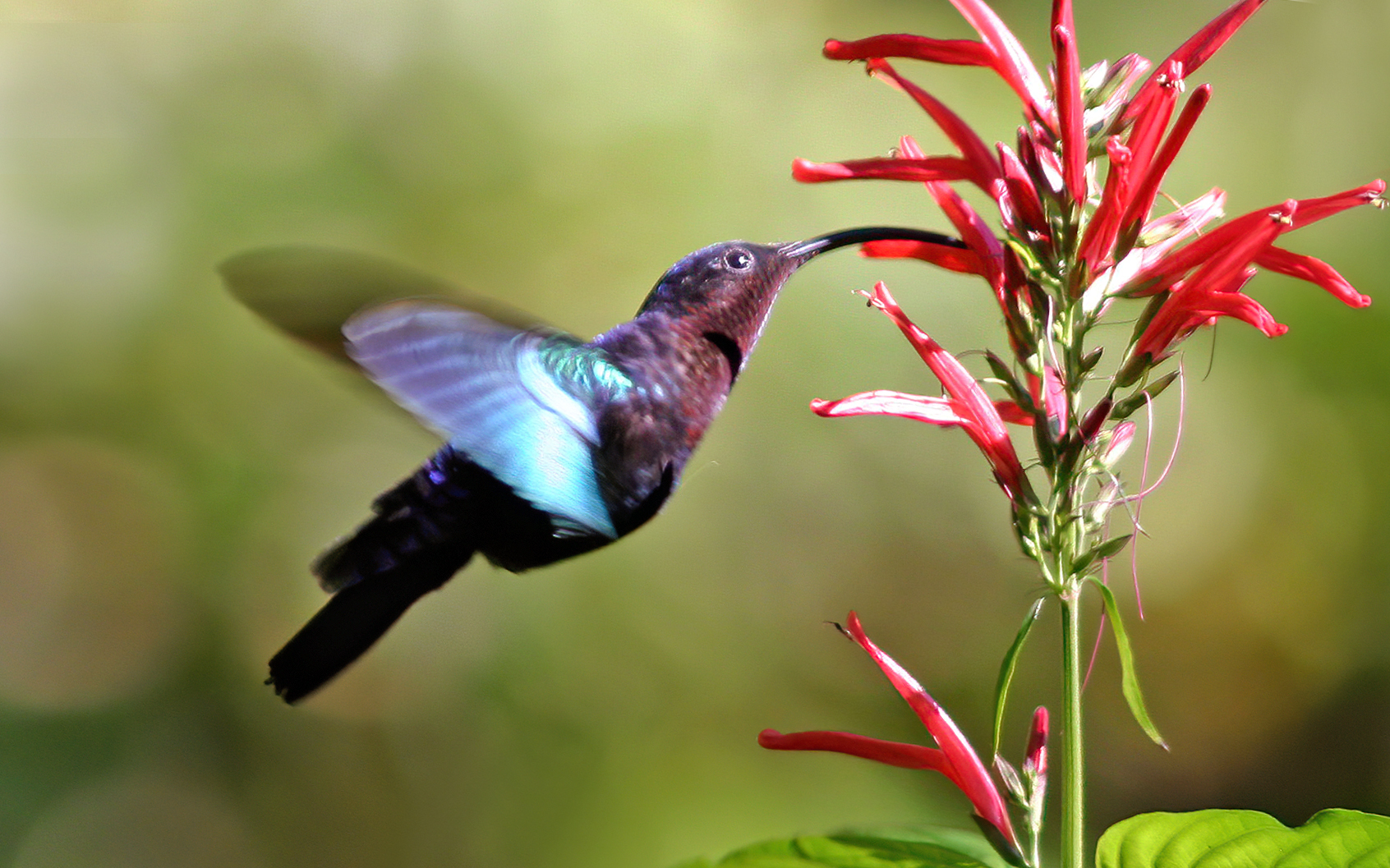
The tiny, vividly purple-throated Lucifer Hummingbird is mainly a species of northern Mexico and central Mexico, and where it reaches the United States, in extreme southern Arizona, New Mexico, and west Texas, it’s a highly sought-after species among avid birders. A hummingbird of Mexico’s central plateau that enters our area in the Big Bend region of western Texas and locally farther west, adapted to desert regions, it is most often seen feeding at flowering agave stalks on arid hillsides, and although small in body size, it has a relatively long, curved bill and long tail.
They are particularly fond of agave flowers when they are available, and they will come into feeders, but they have a low rank among the other species and are often chased off by other hummers. Unfortunately they scarcely visit hummingbird feeders but love the edges of desert canyons where they can feed on agave stalks, century plants and a desert shrub called the ocotillo plant, with male Lucifers having striking iridescent purple throats and green upperparts and flanks. Their deeply forked tails and curved bills make them unmistakable when seen clearly.
Xantus’s Hummingbird

Xantus’s hummingbird is found from central Baja California south to the peninsula’s tip, has also been recorded as a vagrant twice in California and once in British Columbia, and the species inhabits arid woodlands of scrub, oak, and pine-oak at elevations between 150 and 1,500 m (490 and 4,900 ft) and also visits coastal desert, gardens, and feeders. It is a stocky, medium-sized hummingbird of the southern half of Baja California peninsula with no similar species in its limited range.
Berylline Hummingbird

The berylline hummingbird (Saucerottia beryllina) occasionally strays into southeastern Arizona from Mexico. It has a shimmering green head and chest, accented by rufous wings. Though rare in the U.S., its bold coloration makes it a favorite among bird photographers lucky enough to spot one.
Green-Violetear Hummingbird (now Mexican Violetear)
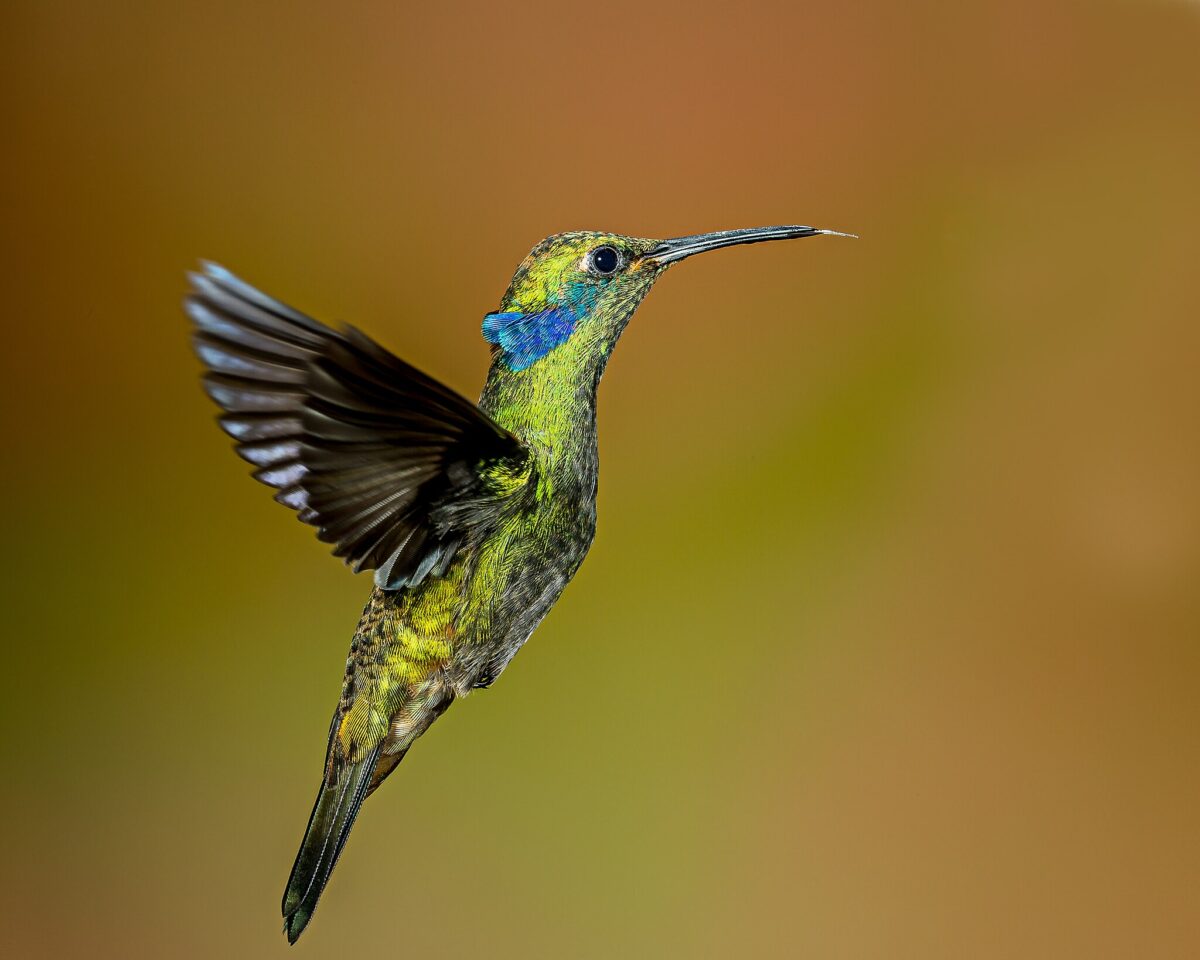
The green-violetear (Colibri thalassinus), recently renamed the Mexican violetear, is a tropical species that occasionally wanders into Texas and other southern states. With emerald feathers and a vivid violet ear patch, they’re a visual treat. They often show up at feeders during unusual migration events.
Plain-Capped Starthroat
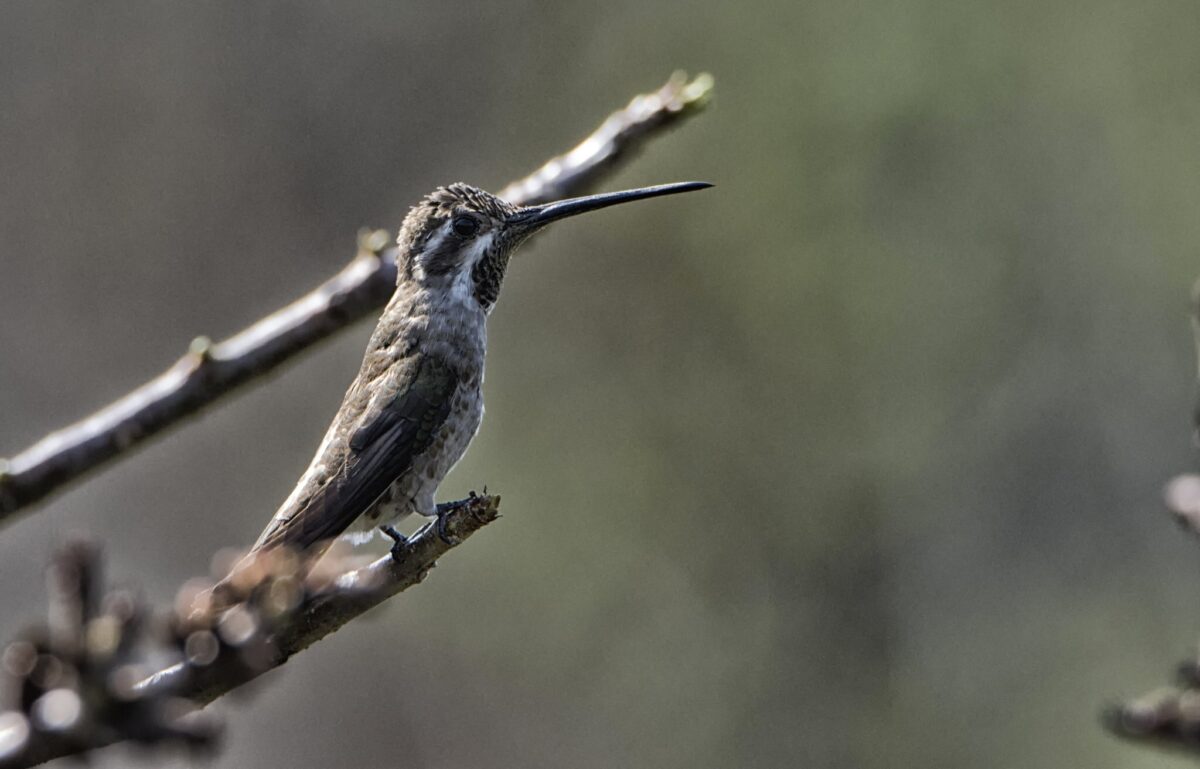
The plain-capped starthroat (Heliomaster constantii) is one of the largest hummingbirds in the U.S., with a straight bill and a subtle yet beautiful mix of green, gray, and white plumage. They are rare visitors to southern Arizona, usually spotted in late summer when flower availability peaks.
Green-Breasted Mango

The green-breasted mango (Anthracothorax prevostii) is a rare tropical hummingbird that occasionally strays into Texas from Mexico and Central America. It is notable for its long, slightly curved bill and the iridescent green stripe running down its breast.
Bahama Woodstar
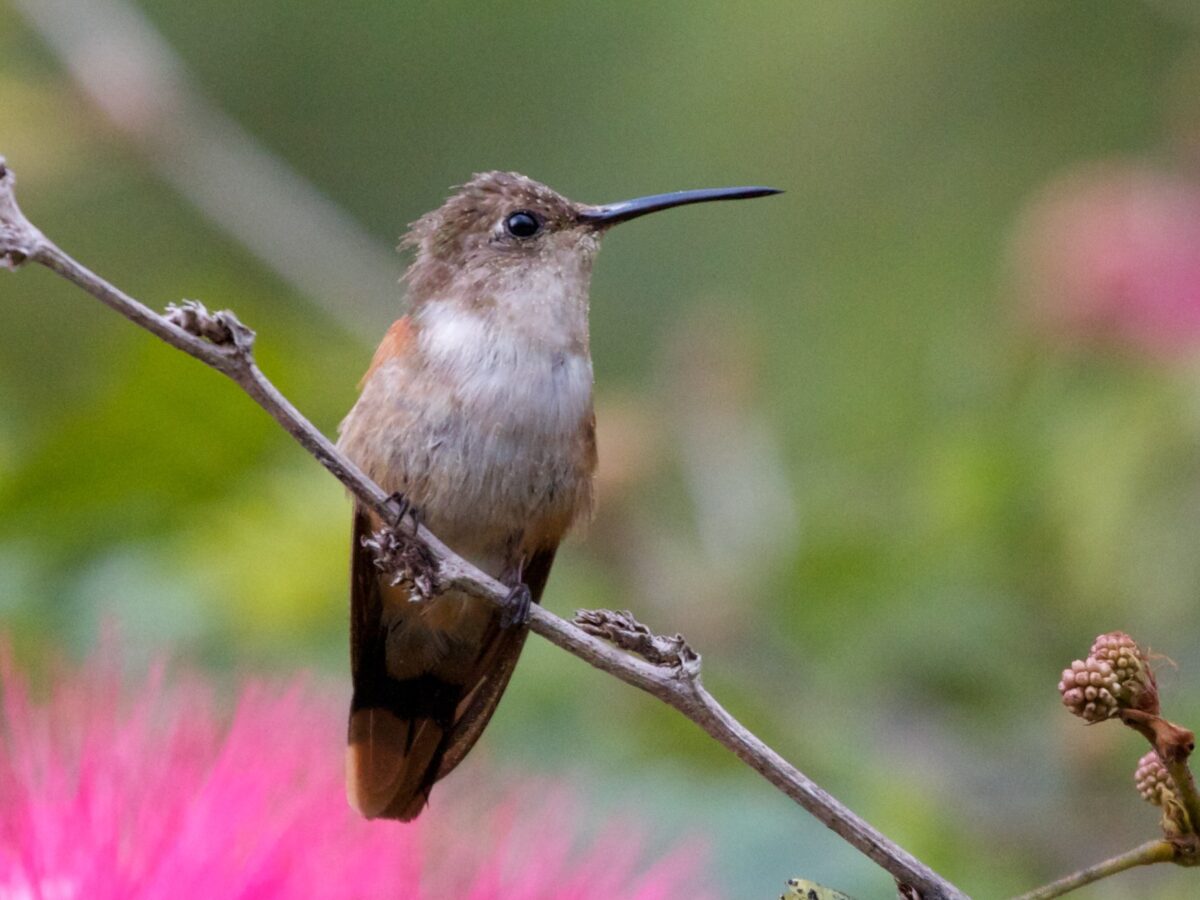
The Bahama woodstar (Nesophlox evelynae) is native to the Bahamas but sometimes appears in southern Florida. These tiny hummingbirds have buff-colored underparts and males display a purple gorget during courtship displays.
Scaly-Breasted Hummingbird
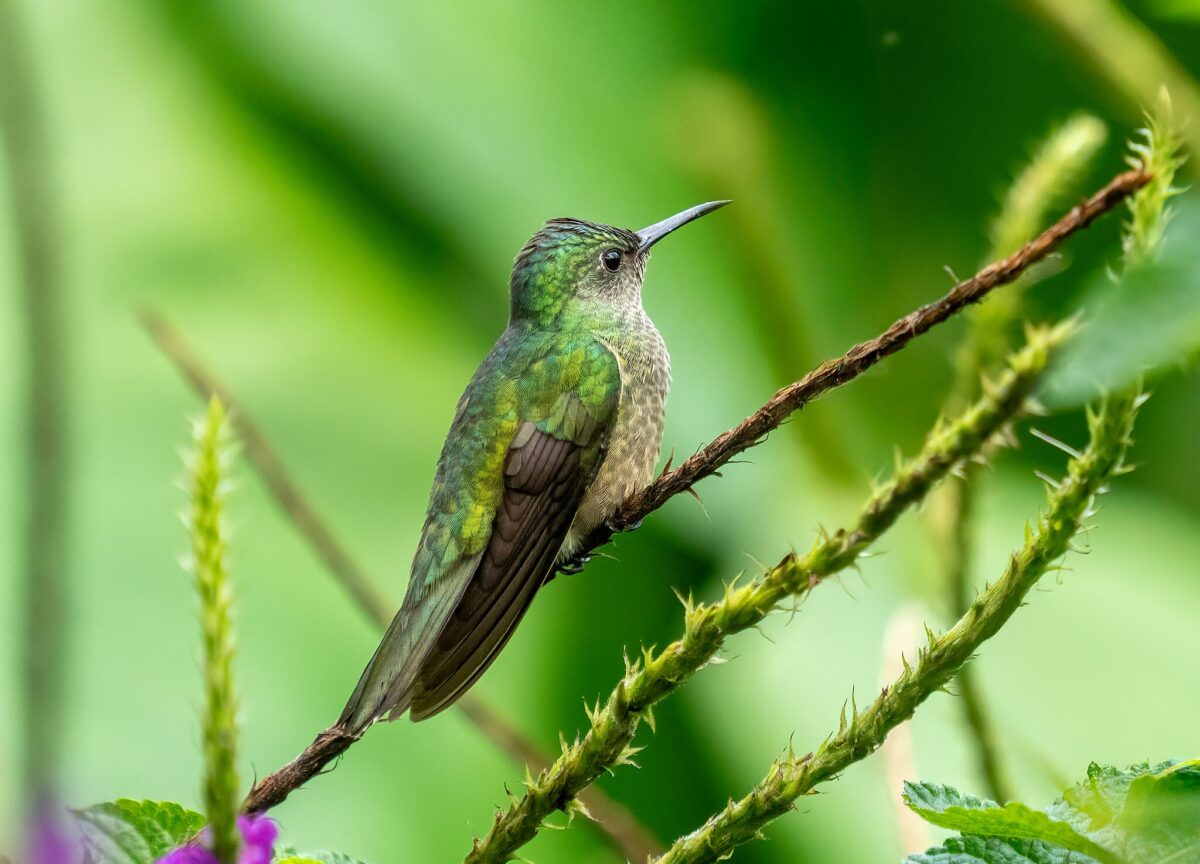
The scaly-breasted hummingbird (Phaeochroa cuvierii) gets its name from the fine, scale-like markings on its breast. While primarily found in Central America, it occasionally ventures into the southernmost U.S., especially Texas. Its muted green plumage may seem plain compared to flashier species, but the intricate feather patterns make it stand out up close.
Wine-Throated Hummingbird
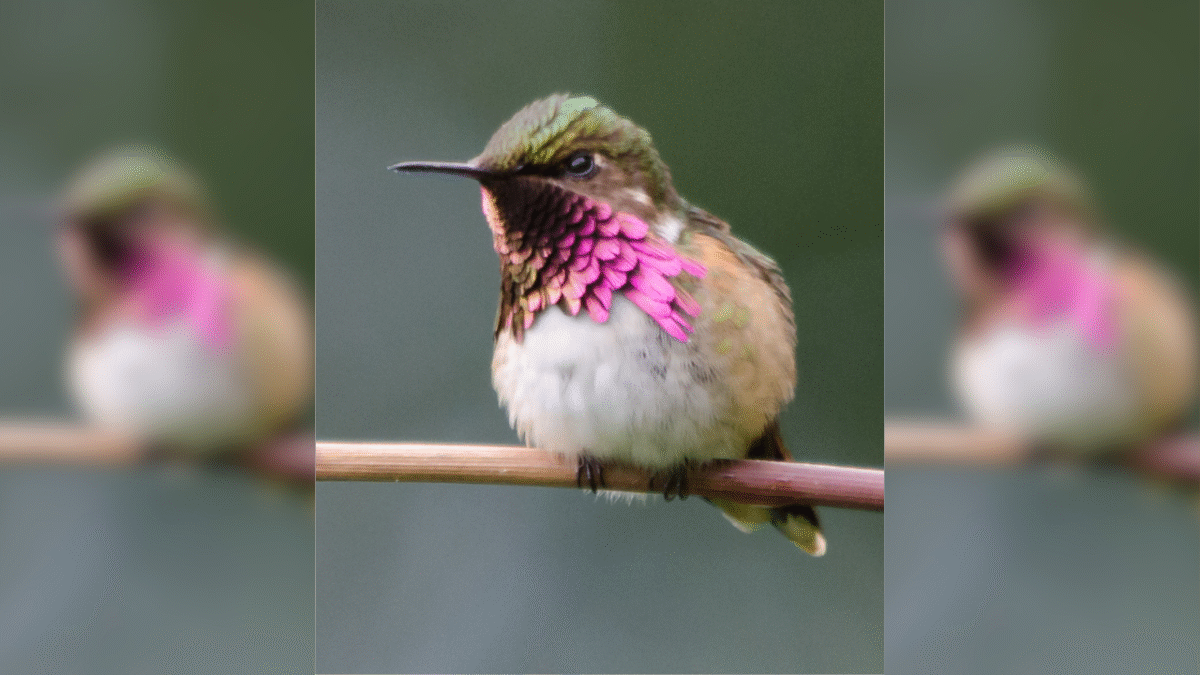
Small but striking, the wine-throated hummingbird (Atthis ellioti) features a deep purple throat that glistens like fine wine under sunlight. It is rare in the United States, seen mostly during unusual migration events in the Southwest. Its preference for high-altitude blooms makes it a special sighting for experienced birders.
Shining-Green Hummingbird

The shining-green hummingbird (Lepidopyga goudoti) has a shimmering emerald sheen that seems to change hue depending on the angle of the light. Native to tropical regions, it’s an uncommon visitor to North America but has been recorded in southern Texas during migration seasons.
Coppery-Headed Emerald
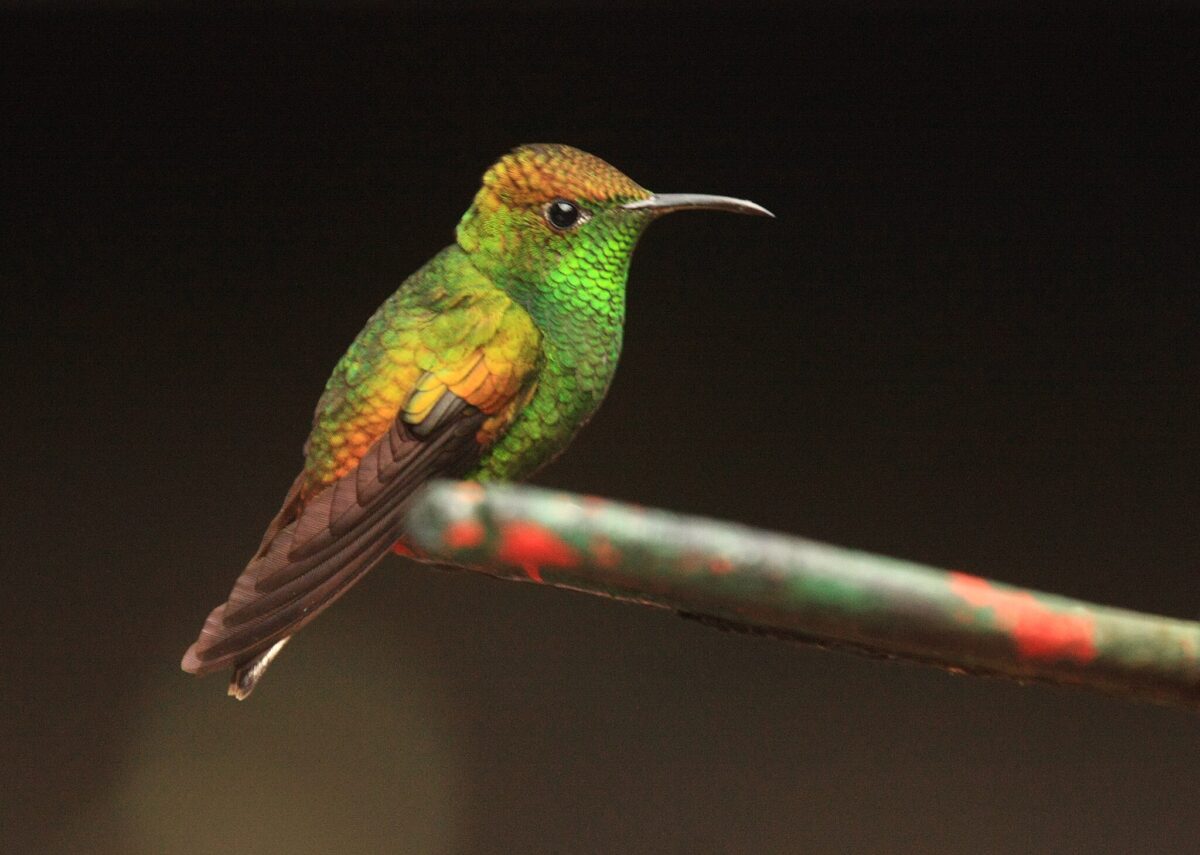
Native to Central America, the coppery-headed emerald (Elvira cupreiceps) sometimes strays north. Males display brilliant green plumage accented by a metallic copper crown. This small hummingbird prefers forest edges and coffee plantations, where it feeds on nectar-rich flowers.
- 22 Coolest Animals Gifted with Extreme Abilities of Survival - August 16, 2025
- 25 Types of Hummingbirds That Can Be Found in North American Gardens - August 15, 2025
- 12 Foods in Your Pantry That Could Help Your Dog Live Longer - August 13, 2025

